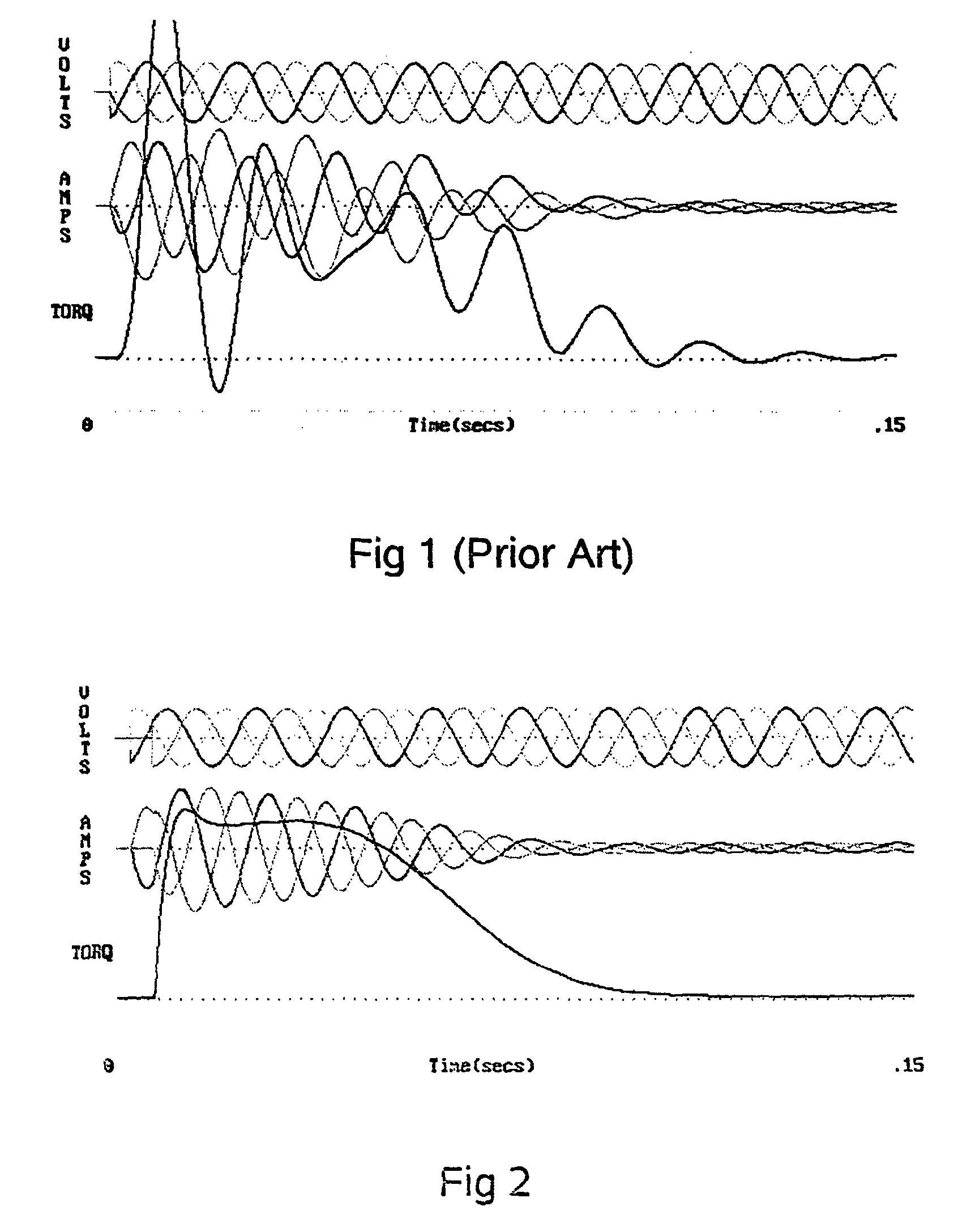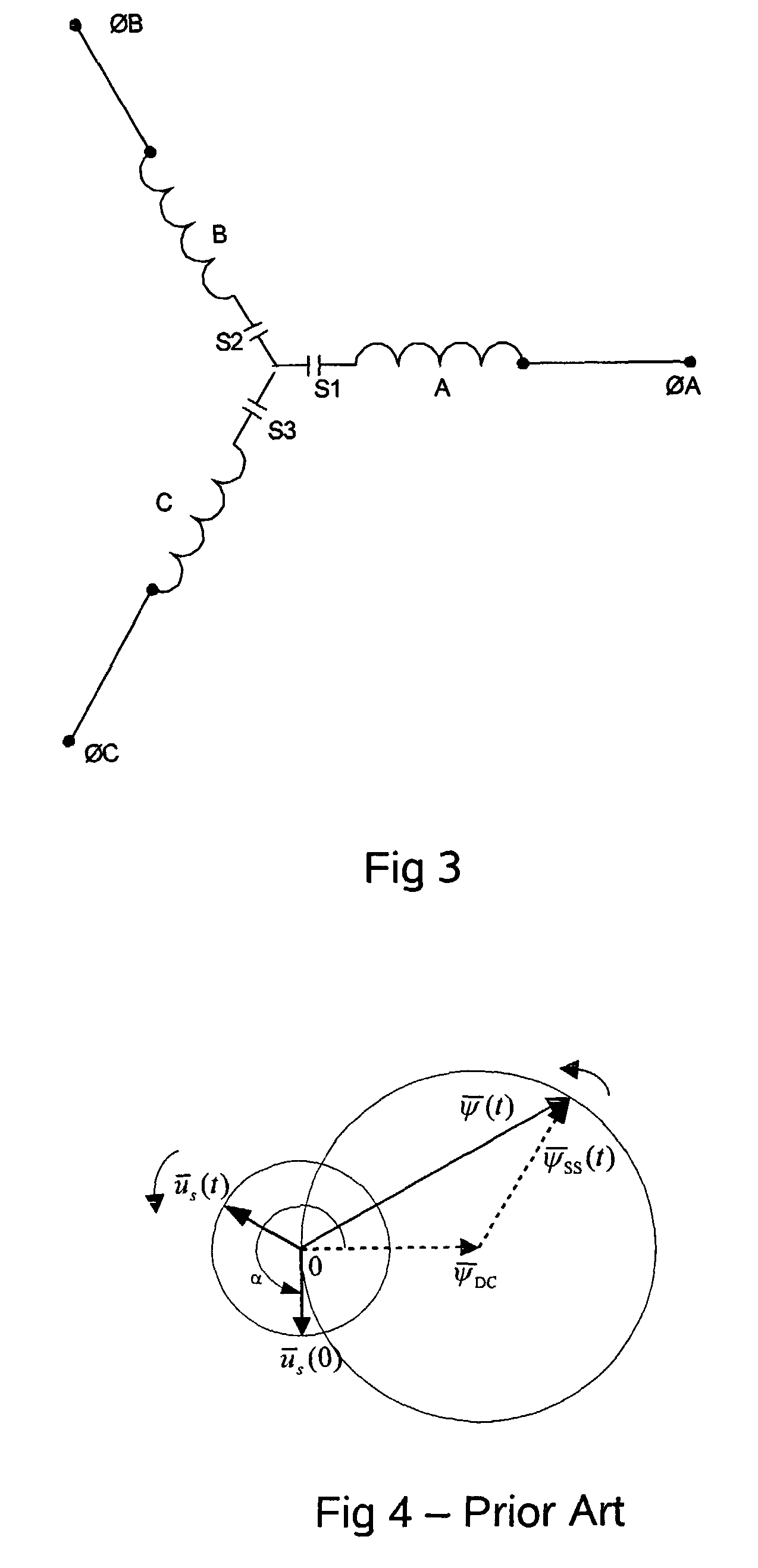Motor starting and switching
a technology of motor starting and switching, applied in the direction of motor/generator/converter stopper, polyphase induction motor starter, dynamo-electric converter control, etc., can solve the problems of severe oscillatory pulsation of torque generated by the motor, the number of additional undesirable phenomena, and the motor protection problem, etc., to achieve repeatable and accurate timing of contact closure and time more accurately
- Summary
- Abstract
- Description
- Claims
- Application Information
AI Technical Summary
Benefits of technology
Problems solved by technology
Method used
Image
Examples
Embodiment Construction
[0066]As an introduction to the thinking behind the invention, there will now be presented a brief description of how simultaneous switching of three phases during starting of a motor generates transient surge currents. When an induction motor is at rest, the internally generated back-e.m.f. is zero. If the stator resistance R, is ignored, then when the supply is applied, current flow is determined by the stator inductance. If all three phases are energised together, the current flow is made up of the balanced steady-state 3-phase AC starting current that will flow plus an exponentially decaying DC transient current, present in differing amounts in each phase.
[0067]The amplitude of the DC transient is determined at the moment of connection when all currents are zero, and their rate of change is limited by the motor inductance. It follows that at the moment immediately after connection the currents must still be zero, before they have had time to grow. Hence, immediately after connec...
PUM
 Login to View More
Login to View More Abstract
Description
Claims
Application Information
 Login to View More
Login to View More - R&D
- Intellectual Property
- Life Sciences
- Materials
- Tech Scout
- Unparalleled Data Quality
- Higher Quality Content
- 60% Fewer Hallucinations
Browse by: Latest US Patents, China's latest patents, Technical Efficacy Thesaurus, Application Domain, Technology Topic, Popular Technical Reports.
© 2025 PatSnap. All rights reserved.Legal|Privacy policy|Modern Slavery Act Transparency Statement|Sitemap|About US| Contact US: help@patsnap.com



